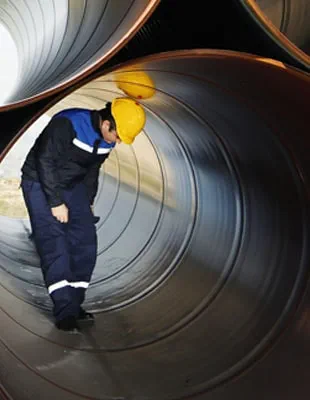Table of Contents
The challenge
In the face of advancing net zero targets, our client needed to identify emission hotspots in its new manufacturing facility.
8,000 sq m
As concerns over climate change continue to grow, there is increasing demand for products and services that are environmentally sustainable. Faced with the threat of rising global temperatures and more frequent and severe weather events, there is an urgent need for countries and organizations to address their own greenhouse gas emissions (GHGs) and advance their net zero goals. This was the case for our client – a leading global automotive manufacturer – who needed to identify emission hotspots in their 8,000 sq m manufacturing facility in the UK, comprising test cells, workshops, and an office space. This activity is critical in enabling them to develop more effective and informed choices towards reducing their overall environmental impact.
The solution
We conducted a whole life carbon assessment to identify steps to reduce emissions and determine the overall cost of achieving their net zero goals.
54%
Arcadis was asked to work with our client to deliver a whole life carbon assessment that could be used to advise them on the steps needed to achieve greenhouse gas emission reductions, aligned with its near- and long-term targets. This would also help determine the cost of achieving net zero.
Whole life carbon assessments are important because they provide a comprehensive analysis of the carbon emissions associated with a building over its entire lifespan. The information can be used to improve the design process, reduce energy consumption during use, and ensure that materials are recycled or disposed of in an environmentally responsible manner.
-
Read more
To deliver a whole life carbon assessment for our client, our team developed a methodology based on guidance documents including PAS2060 (a four-step guideline to help companies achieve carbon neutrality in line with the principles of ‘measure’, ‘reduce’, ‘offset’, and ‘documentation’); EN15978:2011 (a European Standard that assesses the environmental performance of a building, and gives the means for reporting and communicating the outcome of that assessment); and the world-leading RICS Professional Standard.
We began by determining our client’s objectives and the project’s lifecycle boundaries, which in turn allowed for identification of key data, and the data collection methods needed.
The assessment considered both embodied carbon emissions, and emissions from operations. For example, we used BIM data to calculate greenhouse gas emissions and identify where the main hotspots were. We found two of the primary hotspots were around energy consumption and carbon emissions that are embodied in vehicle materials. This allowed us to make recommendations around renewable energy supply – for example, the impact of developing a solar array on the roof of the proposed building. We also looked at the impact and estimated costs of pursuing carbon offsetting.
A further major area of consideration was around emissions from materials. Concrete is by far the largest contributor to greenhouse gas emissions and so we looked at potential alternatives, such as using pre-cast concrete. We estimated that this measure alone could reduce emissions from concrete by as much as 53%.

The impact
The results helped develop effective strategies to manage emissions, reduce offsetting cost and support more informed choices for mitigating environmental impact.
£30,000
The results of the whole life carbon assessment are being used to develop effective strategies to manage greenhouse gas emissions and help our client achieve its targets on the route to net zero. It has resulted in significant overall savings of 41% for embodied carbon, and operational carbon savings of 42%. Additionally, the proposals have also helped reduce the cost of offsetting to approximately £30,000.
Helping our clients achieve their net zero goals is important because it represents an opportunity for innovation, job creation, and economic growth. By transitioning to a low-carbon economy, we can build a more sustainable future for all.
Not done reading?
This also might be interesting for you
- Related Projects
- Related Insights
- Related Blogs











